

|
index |
I intend to use this page as a place to show some of my designs. This not so much because their explanation is desirable or necessary but it can be a way of exposing my way of reasoning. Actually al my design is done, apart from commercial considerations, as a way of posing, and answering, questions. This page might also have some interest for the industries that produce our designs; not so much as a particular type of showcase, another form of publicity (which it is), but as a place for confrontation of their products with other people. One problem is that illustrations are voracious of precious bites: so some form of rotation will probably be necessary. |

producer: MAGIS, Motta d.Livenza design: Andries Van Onck, 1983 collaborator: Kazuma Yamaguchi |
This is our "cricket chair" that can be folded
and hung on the wall. It is designed by me with the collaboration of Kazuma
Yamaguchi and produced since 1983 by Magis in Motta di Livenza, Italy.
It is in the permanent collection of the Stedelijk Museum in Amsterdam.
|

|
The cricket chair has a wire frame support and an ABS injection molded seat and back that comes in different colors. It has been designed in the folded position considering it, less as an expression of ergonomical analysis of the seated position, as a graphical play with an oval and a circular form in bright colors and some elementary black lines. |
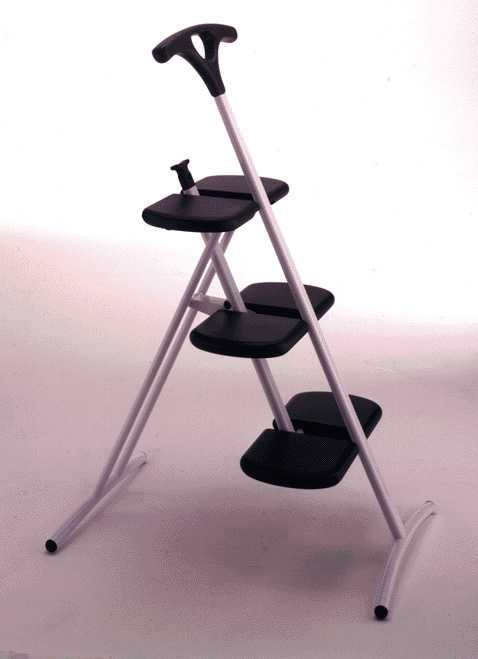
producer: KARTELL , 1991 design: Andries Van Onck collaboration: Nico Smeenk |
Our "step" ladder follows the same principle of being designed in the folded position. Steps have been the Cinderella's in furniture design, what perhaps explains the success of this one, called "Tira mi sù", that is "Draw me up", produced by the famous Kartell industry, in Binasco Italy, designed by myself with the collaboration of Nico Smeenk in 1991 in such a way that it can be shown permanently in company of other furniture in the living room. |
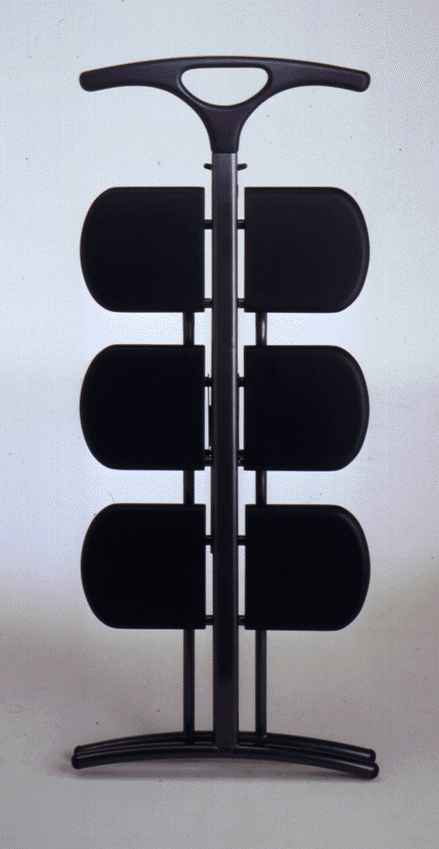 |
It is in steel and plastic. A particular characteristic is the central leg instead of the traditional double. The following, definitive, step would be no leg at all: the metaphysical ladder with free floating steps that eventually would permit angels to descent on earth and us earthlings to ascent to heaven. |
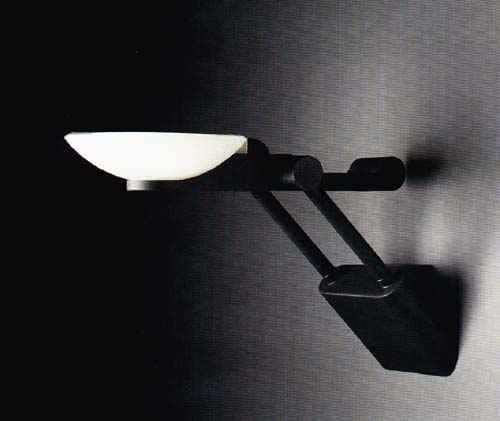
producer: STATUS. , 1991 design: Andries e Hiroko Van Onck |
 This
adjustable Wall lamp "Hoshi" is in die cast aluminum and thermosetting
engineering plastics with a bright green diffuser in pressed glass with
a 250W halogen bulb. This
adjustable Wall lamp "Hoshi" is in die cast aluminum and thermosetting
engineering plastics with a bright green diffuser in pressed glass with
a 250W halogen bulb. |
||
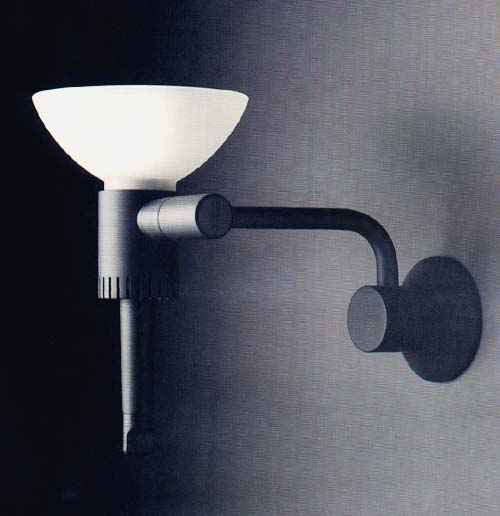
producer: STATUS. , 1991 design: Andries e Hiroko Van Onck |
The "Kaiten" lamp comes in a wall version and as a standing lamp. The lamp body is in die cast aluminum and thermosetting engineering plastics and a pressed sanded glass diffuser. Light intensity can be regulated by the electronically controlled 250W halogen bulb. | ||
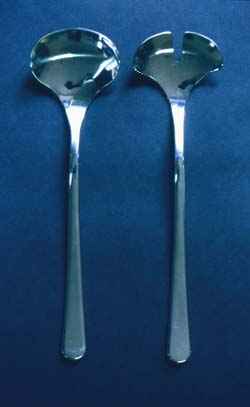
producer: SERAFINO ZANI, 1991 design: Andries and Hiroko Van Onck |
Morphologically, this cutlery for the Serafino Zani
factory is designed in the wake of japanese tradition as in the geisha's
comb. These were made in similarity to the leave of the Ginkgo Bilobo,
one of the first trees that appeared on earth.
|
 |
This cutlery is an example of minimal design, as it were the development of a bud starting as a coffee spoon, growing through the 'soup spoon stage' unto its final mature form as the salad set. |
|
|
|
|
|
|
|